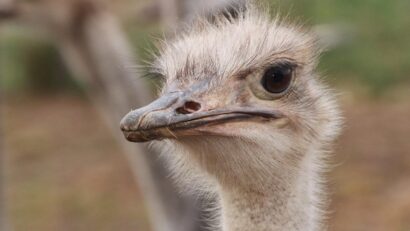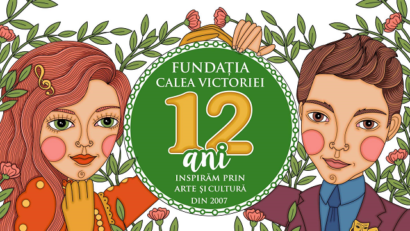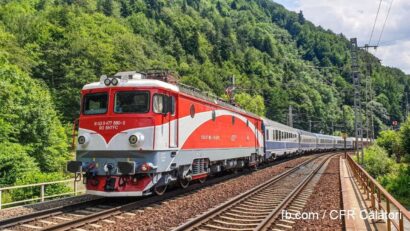Eternity was born on the village
“Eternity was born in the village said Lucian Blaga, a Romanian philosopher, poet and playwright born on May 9, 1895.

Ana-Maria Cononovici, 13.03.2016, 16:35
The end of February saw an event meant to designate Romania’s
cultural villages, hosted by the ‘Dimitrie Gusti’ Village Museum in Bucharest.
The representatives of the villages that applied for obtaining the title of
Romania’s cultural village have shown much enthusiasm at the initiative and
have brought along to the Village Museum various items that are representative
of the culture and local traditions of their regions.
The 25 candidates attending the event at the Village Museum in
Bucharest, villagers capitalizing on their area’s spontaneous flora or
interested in preserving the ancient customs and traditions and representatives
of communes that are trying to make better use of the experience of the village
elderly, were all proud to play a role in the village community they belong to.
Before the jury, the mayors of the candidate communes talked about the cultural
and historical traditions of their communities, about investments in
infrastructure and the events they organized locally. The event was attended by
villagers of all ages dressed in folk costumes. Some of the communes had their
own stands where they displayed local products.
The Drăguş commune in Brasov county obtained the highest number of points at
the 3rd edition of the competition entitled Romania’s Cultural
Villages. The mayor of Drăguş commune, Gheorghe Sucaciu said that he hoped that his commune would
continue to preserve the specific traditions and costumes of the region. The
communes coming next in the classification are Sangeorgiu de Mures (in Mures
county) and Ciocanesti (Suceava county), the latter being the winner of the
2014 edition.
At the stand of the Ciocanesti commune
we were welcomed by Marilena Niculita, the director of the National Museum of
Painted Eggs of the Ciocanesti commune, in Bukovina.
Marilena Niculita: We are very happy that the
cultural events hosted by our commune are all appreciated. The national
festival of painted eggs has reached its 13th edition this year,
just as the national trout festival. We enlisted in the contest 11 cultural
events, among which: the sheep drive that takes place on May 29, the festival
called ‘Incursion into the rhododendron reserve on the Suhard mountain, the
religious feast celebrating the Holy Apostles Peter and Paul, the patron saints
of the monastery bearing the same name, or ‘The week of rafting’. This is the
very week preceding the Trout Festival. In our region tourists can go rafting
on the Bistrita River.
Other communes that have this
year been awarded the title of cultural villages are: Miroslava
(Iaşi), Vorona (Botoşani), Siseşti (Mehedinţi), Şiria (Arad), Tulgheş
(Harghita), Vadu Crişului (Bihor), Izvoarele (Prahova), Jidvei (Alba), Cândeşti
(Dâmboviţa), Băcia (Hunedoara), Horia (Constanţa), Bonţida (Cluj), Ruginoasa
(Iaşi), Dudeştii Noi (Timiş), Corneşti (Cluj), Costeşti (Vâlcea), Văcăreni
(Tulcea), Prundeni (Vâlcea), and Arcani (Gorj).
Next Stefan Aurel, a teacher of Romanian language and mayor of the
Vorona commune, will tell us more about his commune:
Stefan Aurel: Our commune has very
beautiful and varied traditions and our moral duty is to preserve and make best
use of them, as well as pass them on to the next generations. Children and
teachers alike are involved in our cultural events. We have several special
events with a wide scope such as the feast of the patron saints of the Vorona
monastery marked on September 8. The villagers of Vorona have preserved the
custom of the traditional round dance that is held in the monastery’s courtyard
after the religious feast. During the industrialization period, when the
tradition of the round dance was in danger of being lost, a villager of Vorona
had the idea to include this tradition in the Festival of song, dance and
traditional costumes entitled the ‘Forest Celebrations’. The festival has
reached its 42nd edition.
Our next interlocutor, Mihaela Sidea Magureanu,
a librarian from the Costesti commune, in Valcea county, tells us more about
her commune:
Mihaela Sidea Magureanu: We have the
Trovanti Museum, the Bistrita and Costesti Gorges, and the Buila Vanturarita
National Park. In Costesti there is an art section, called ‘Gheorghe D.
Anghel’, of the Valcea County Museum,
which displays works donated by a villager. The region also boasts many famous
monasteries among which Bistrita monastery. In the past years we have
celebrated Aurealian Sacerdoteanu, a personality of our commune who was a
historian, archivist and director of the National Archives. Another personality
of the commune is the actor Vasile Nitulescu. Soon we will celebrate general
Nicolae Ciobanu, who donated to our library as many as 10 thousand books from
his personal collection. We have an ensemble of dance and customs entitled
‘Princesses from Costesti’ which is more than 30 years old.






























